Home of Fenway Park and one of the original colonies, Massachusetts is a well-known and well-loved state in the Northeast. The state has a diverse geography, featuring coasts, mountains, plains, rolling hills, and valleys. This diversity provides excellent habitats for many bird species. Discover 10 blue birds in Massachusetts and learn about their homes, appearance, diet, nests, and vocalizations.
Barn Swallow
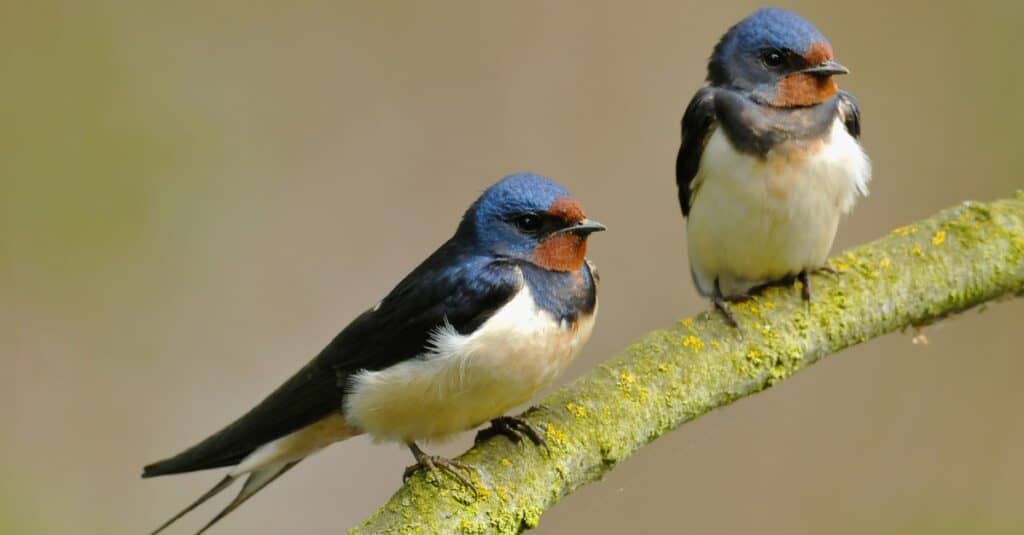
Barn swallows are breeding birds in Massachusetts. They spend their summers in open areas around solid structures.
©CezaryKorkosz/Shutterstock.com
Migration and Habitat: As a breeding bird of the United States, barn swallows spend their summers in Massachusetts. They need open areas, a solid structure, and a mud source for their breeding habitats, most commonly near a riverbank.
Features and Coloring: Their wide shoulders give way to long, pointed wings. Their coloring consists of dark blue, rufous, and cinnamon.
Food: Flying insects are their primary food source, but they may also eat spiders, snails, berries, and seeds. They don’t typically visit feeders unless you provide ground-up eggshells for their digestion.
Vocalizations: They make excited twittering and chattering sounds.
Nests: They nest in mud and dried grass placed under eaves, bridges, and other structures.
Tree Swallow

Tree swallows are another breeding bird in Massachusetts. They eat flying insects and prefer to live near bodies of water.
©Tom Reichner/Shutterstock.com
Migration and Habitat: Tree swallows breed in Massachusetts and throughout the Northern United States. They prefer to live near bodies of water with abundant flying insects, such as areas like marshes, wooded swamps, and beaver ponds. They winter in the Southern US, Mexico, and Central America.
Features and Coloring: They have short bills, notched tails, and long wings. Their plumage is shiny blue-green, dark brown, and white.
Food: These birds primarily eat flying insects, but they may also consume other small animals and plants.
Vocalizations: Listen for their cheerful twitters!
Nests: They will make a grass cup inside dead tree holes.
Cliff Swallow

The cliff swallow occasionally spends summers in Massachusetts, living in open areas near water.
©iStock.com/SteveByland
Migration and Habitat: Cliff swallows are occasional breeders in Massachusetts but they are usually seen in the Western United States. They migrate through the South and Central America, and winter in South America. Like other swallows, they need open areas near the water with a mud source.
Features and Coloring: They are compact birds with broad wings and squared tails. Their plumage is midnight blue, brown, white, and reddish-brown.
Food: This species eats flying insects throughout the year, such as flies, bees, wasps, and moths.
Vocalizations: Their calls are squeaky chatters.
Nests: They build dried mud cups on cliffs, buildings, and bridges.
Blue Jay

Blue jays are permanent residents in the Eastern United States. They in habit forest edges, parks, yards, gardens, and fields.
©iStock.com/BrianEKushner
Migration and Habitat: Blue jays are year-round in habitats of the Eastern United States, although some populations may move out west during winter. These birds prefer oak trees on forest edges. However, you can find them in many habitats, like parks, yards, gardens, and fields.
Features and Coloring: They are various shades of blue, white, light gray, and black. They have blue crests and broad, rounded tails.
Food: Blue jays mainly eat insects, nuts, seeds, and grains. But they will also consume small vertebrates, eggs, nestlings, and injured or dead adult birds.
Vocalizations: Their cry is a harsh “jay-jay!”
Nests: Their nest is a bulky grass and twig cup placed in a tree fork.
Eastern Bluebird
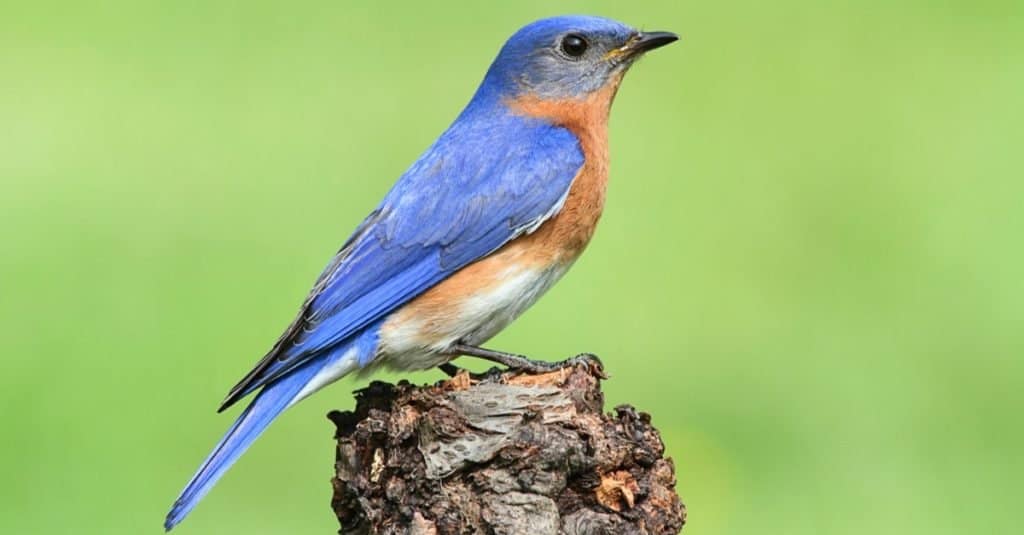
The eastern bluebird lives year-round in Massachusetts near parks, fields, yards, and gardens.
©Steve Byland/Shutterstock.com
Migration and Habitat: Eastern bluebirds are another year-round species in Massachusetts. Most populations are permanent residents in the Southeast, while others breed in the Northeast. You can spot these birds in familiar places, like parks, fields, yards, and gardens.
Features and Coloring: These birds have big bellies and round heads and feature vivid blue, white, and rusty red plumage.
Food: The eastern bluebird eats insects caught on the ground. And in the winter, they feast on large quantities of fruit and berries.
Vocalizations: They sing soft, melodious notes.
Nests: Loose weed cups are placed in a tree cavity.
Black-Throated Blue Warbler

Black-throated blue warblers breed in the state’s interior and migrate along the coast. Look for them in mature deciduous woodlands.
©iStock.com/BrianLasenby
Migration and Habitat: The black-throated blue warbler breeds across most of the state, except along the coast where it travels during migration. They winter in Central America and the West Indies. They breed in mature deciduous woodlands with dense shrubs.
Features and Coloring: Large and plump for a warbler, this species is well-proportioned with a sharp bill. They are midnight blue, black, and white.
Food: Flies, caterpillars, and spiders comprise most of their diet. But they also supplement with fruits.
Vocalizations: They emit husky ascending songs.
Nests: They use an open cup of bark in thick shrubs.
Belted Kingfisher
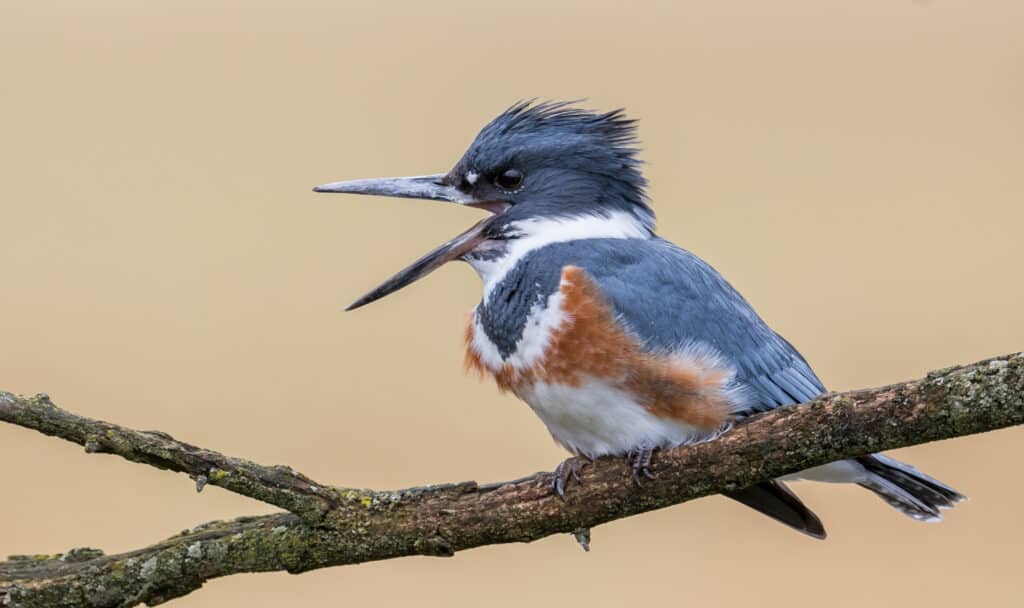
Belted kingfishers live all year in Massachusetts. You can find them in many habitats near water, including streams, rivers, lakes, and more.
©Harry Collins Photography/Shutterstock.com
Migration and Habitat: Belted kingfishers live year-round across the United States. Populations that breed in Canada winter in the Southwest, Mexico, and Central America. This species only requires water and vertical banks for nesting. You can find them near streams, rivers, lakes, and other bodies of water.
Features and Coloring: These stocky, crested birds have large heads and thick, pointed bills. They are bluish-gray, white, and chestnut.
Food: They eat mostly fish and crustaceans but may also consume small mammals, reptiles, amphibians, and young birds.
Vocalizations: They alert with loud rattles and screams.
Nests: They dig tunnels inside steep dirt banks.
Indigo Bunting
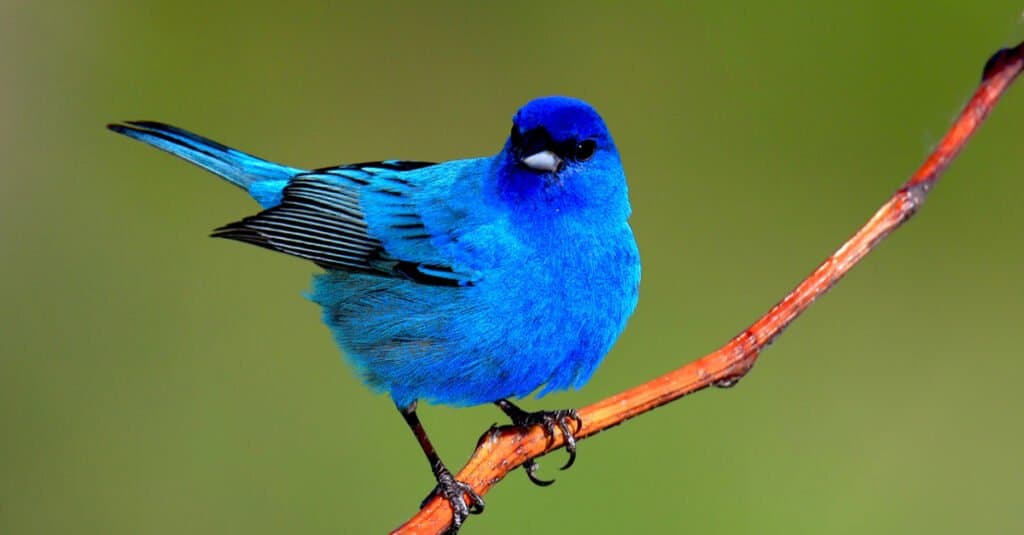
Indigo buntings breed across the state and live in abandoned fields, grasslands, and suburban lawns.
©John L. Absher/Shutterstock.com
Migration and Habitat: The indigo bunting is a breeding bird of Massachusetts and the rest of the Eastern United States. They migrate through Florida and the Southwest to winter in Mexico, Central America, and the West Indies. Their breeding habitats are often near brush and weeds, most commonly near abandoned fields, grasslands, and lawns.
Features and Coloring: They have conical-shaped bills and short tails. The breeding male is overall blue with a silver bill and dark streaking in his wings.
Food: Insects comprise the majority of their summer diet. But they also consume large quantities of small seeds, berries, and buds.
Vocalizations: These birds have rapidly repeated warbles.
Nests: They nest in dense shrubs or low trees. Their nest is an open cup of weeds, leaves, and grass.
Blue-Gray Gnatcatcher
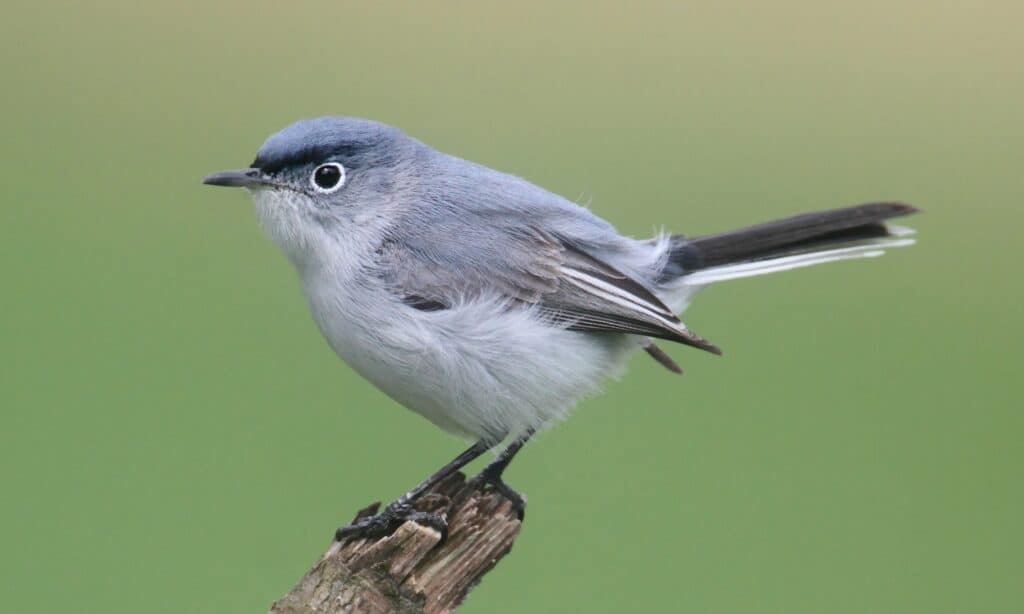
Blue-gray gnatcatchers live in Massachusetts during spring and summer. They breed in mixed woodlands in moist areas.
©iStock.com/SteveByland
Migration and Habitat: The blue-gray gnatcatcher is a breeder of the east and the southwest, living in Massachusetts during spring and summer. But many populations live year-round in Mexico and the Southeast along the coast. They breed and forage in mixed woodlands in moist areas.
Features and Coloring: These birds have long legs, long tails, and thin bills. Their plumage is blue-gray, black, and grayish white.
Food: They mainly eat insects and spiders. And in they consume significant quantities of moths and their larvae in the northeast.
Vocalizations: This species make thin, nasal warbles.
Nests: Their nest is a compact cup of weeds and grass placed on horizontal tree limbs.
Rock Pigeon
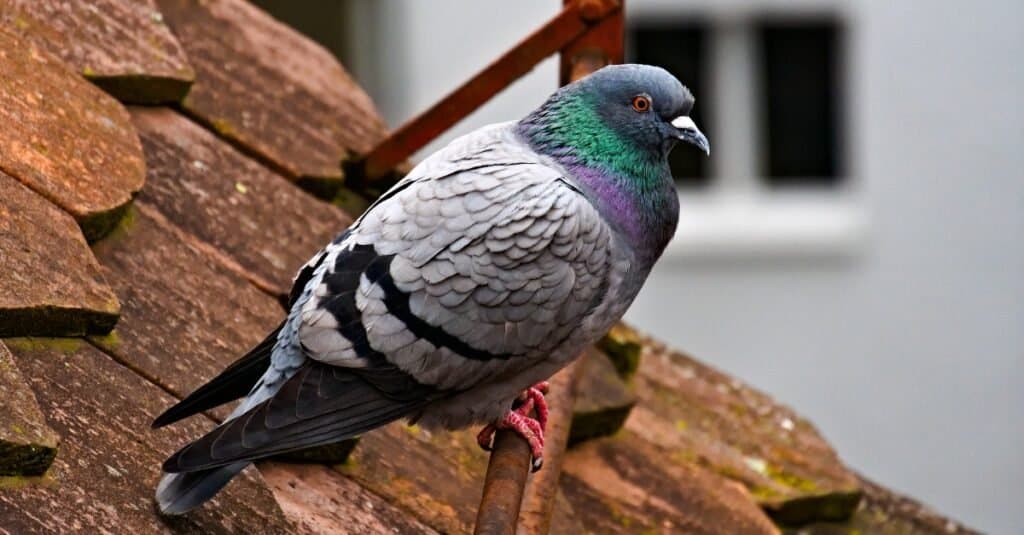
The rock pigeon is prolific in North America year-round. They inhabit urban, suburban, and rural areas near human habitations.
©iStock.com/Christian Sturzenegger
Migration and Habitat: Rock pigeons are prolific year-round across North America and South America. They live in urban, suburban, and rural areas near human habitations. You can also find them on farmland and rocky cliffs.
Features and Coloring: They are large plump birds with small heads featuring bluish-green, purple, and gray plumage.
Food: The rock pigeon mainly eats seeds and fruits but will also consume garbage and crumbs left by people.
Vocalizations: Listen for their soft cooing.
Nests: Females build a platform of twigs and grass and place them on window ledges, barn lofts, rain gutters, and anywhere else suitable.
The photo featured at the top of this post is © PavlovaSvetlana/Shutterstock.com
Thank you for reading! Have some feedback for us? Contact the AZ Animals editorial team.






